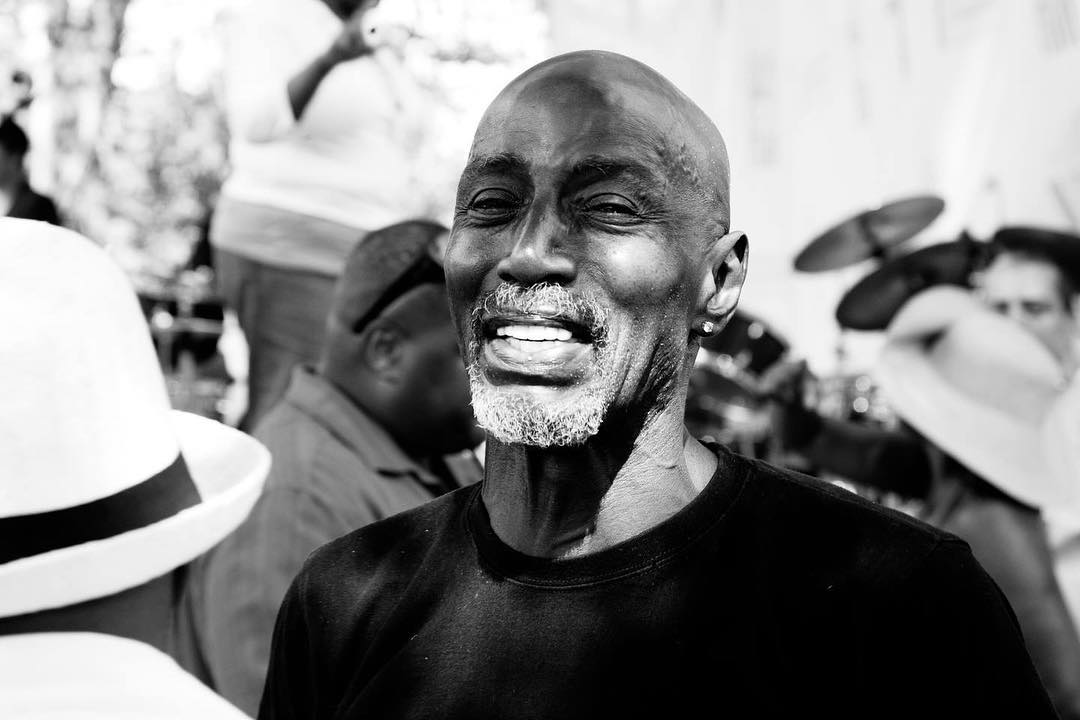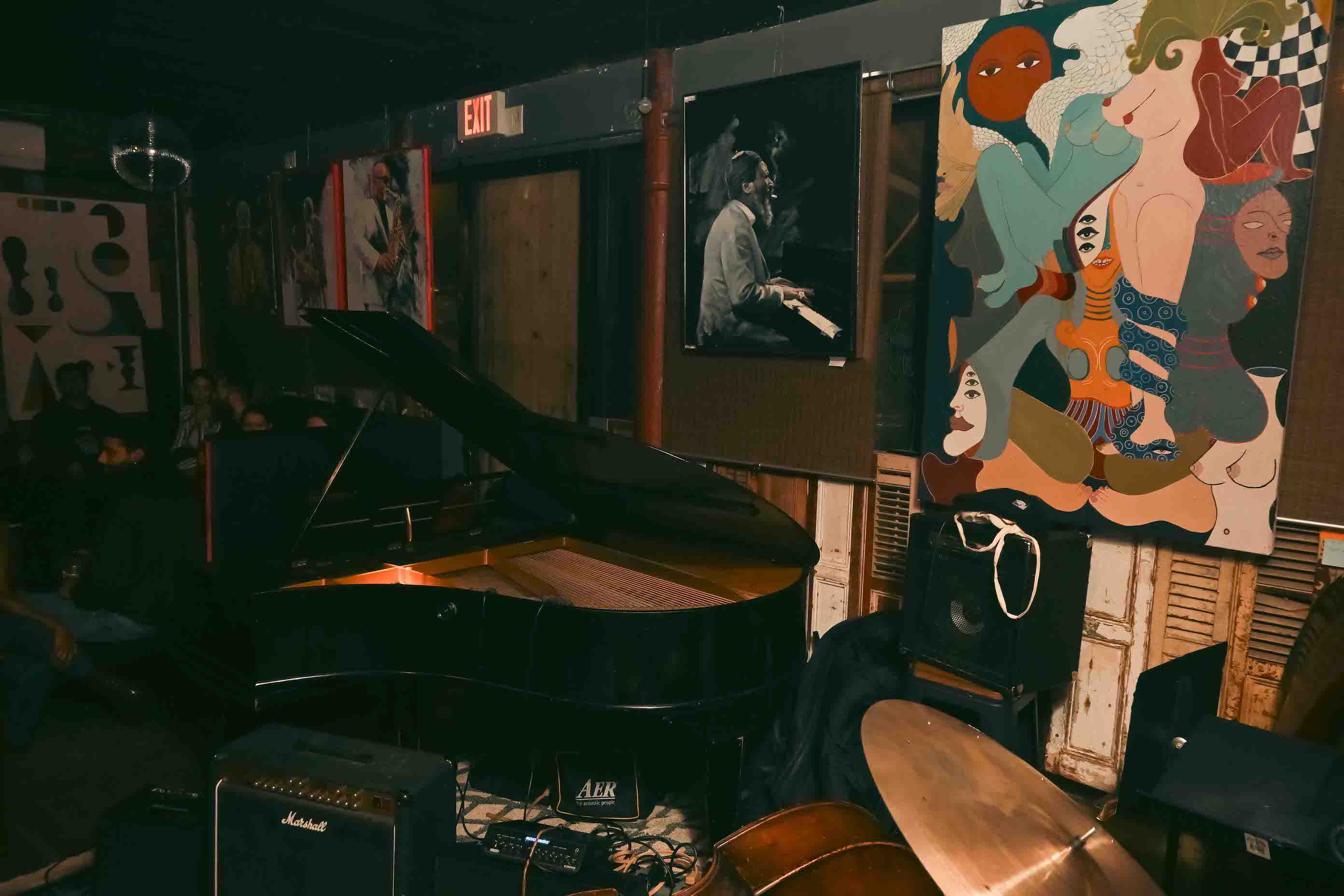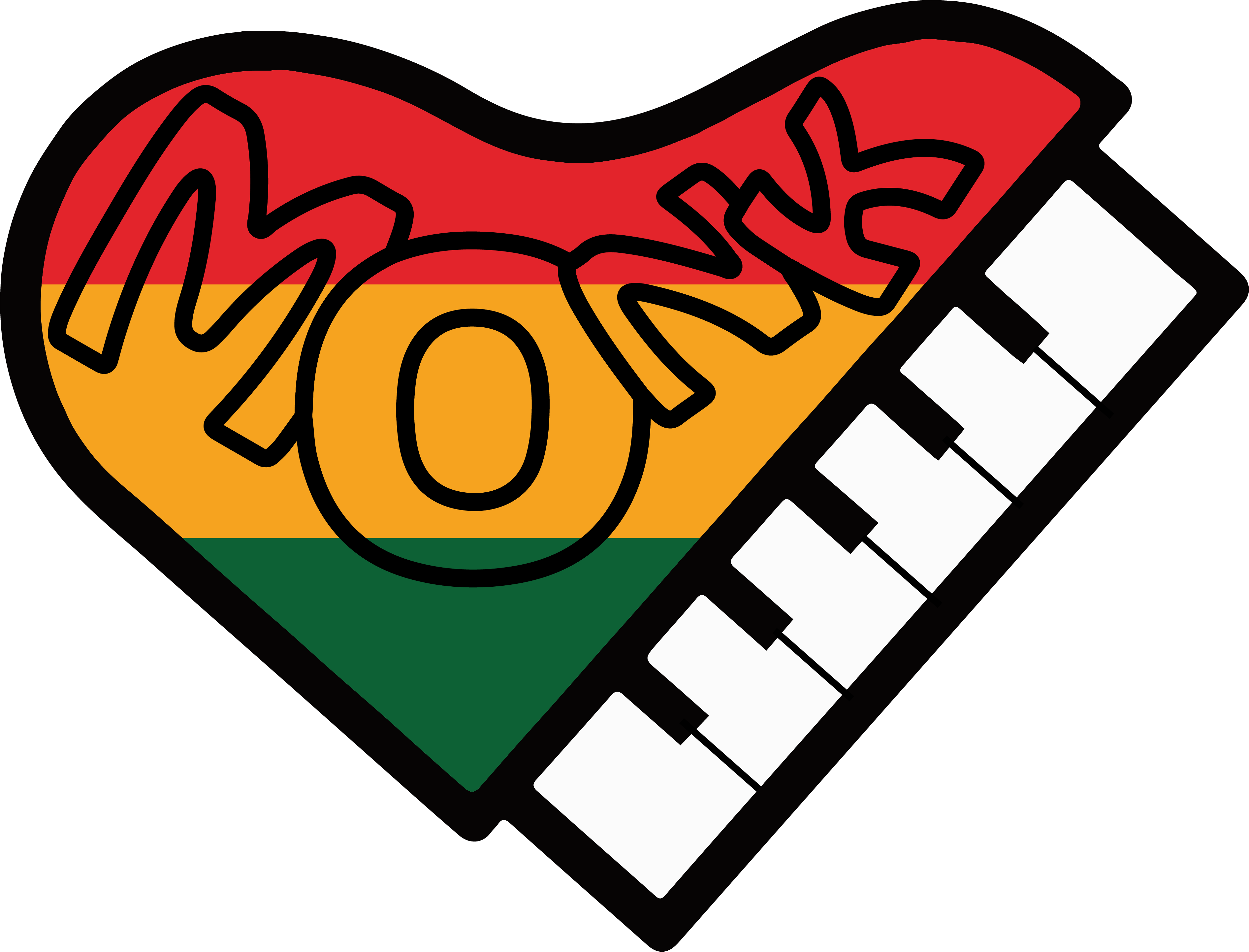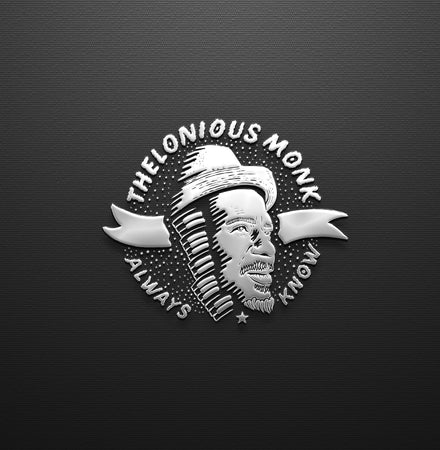The Little Red Wagon
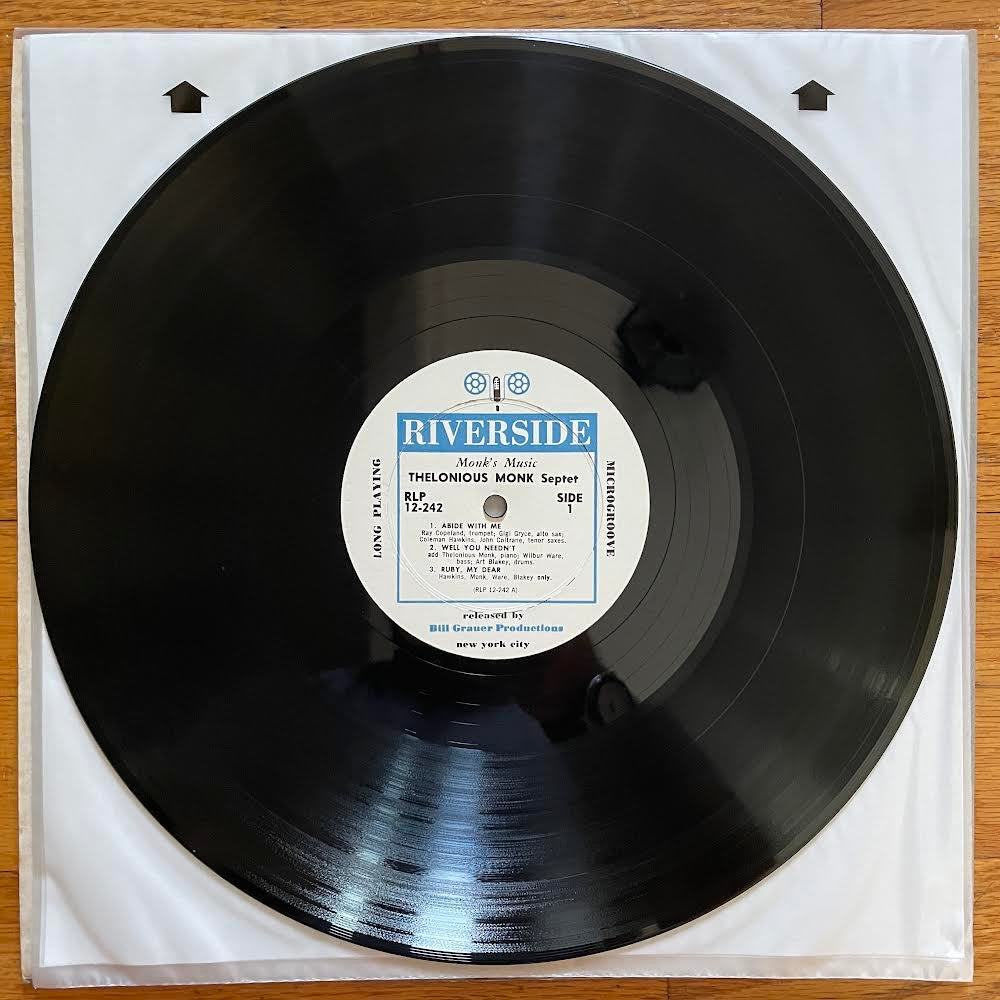
On this day in 1957, Monk began recording Monk’s Music, a masterpiece known for its star-studded lineup and iconic cover photo.
By DJ Pari.
A few days ago, just as I was pondering how to begin my essay about the 65th anniversary of the recording of Monk’s Music – Thelonious Monk’s fifth session for the Riverside label – I glanced at my Twitter feed when someone’s comment on a tweet about the pianist’s 1968 album Underground caught my eye. For the uninitiated, the latter title has been commemorated for its outrageous, lavishly produced cover art that places our hero in the French resistance during World War II, complete with props like a gagged Nazi officer tied to a chair, the casual placement of half a dozen F1 hand grenades, and the Baroness Pannonica de Koenigswarter lurking in the background, right behind a live cow (yes, for real). “I want to believe that Monk didn’t pose for album covers,” the tweet said. “They just followed him around and used pictures of him going about his day.”
While clearly a tongue-in-cheek observation, this remark perfectly encapsulates the mystique that Monk exuded for much of his life. The pianist knew how to use his widespread reputation as an eccentric artist to his advantage, and some of the stories that survive to this day – factual or not – are so intriguing that we want them to be true. But when I talked to Monk’s son, the drummer T.S. Monk, for a piece about the Brilliant Corners album last fall, he painted a very different picture of his father – that of a serious artist who was a loving husband, father and family man.
Which brings us back to Monk’s Music, a summit of jazz giants including Coleman Hawkins, John Coltrane and Art Blakey that is hailed as one his most challenging albums that the pianist did utilizing a full horn section. And much like the cover for Underground, the art gracing the jacket for this one is equally celebrated. Here, we find Monk sitting hunched in a little red wagon, a briefcase and a notepad on his lap, his right hand holding a long pencil. As always, Monk is impeccably dressed, sporting a dark three-button suit, dark tie, crisp white shirt, handkerchief, and a plaid driving cap. He glances at us through a pair of his signature bamboo-framed sunglasses, with a mix of annoyance and amusement, and a hint of curiosity.
This visually striking photograph – in all its ridiculous, self-ironic glory – has been reproduced countless times over the decades, gracing not just the covers of the album’s many iterations, but also t-shirts, posters, coffee mugs and other merchandise, prompting fans and historians to speculate about the story behind this picture. Surely it must have been a carefully composed image, as no grown man would accidentally find himself in a kid’s pull-along wagon? Maybe it was an attempt at depicting Monk as child-like, even clownish, feeding the rumors that he was an adult with a childlike mind?
As always with Monk, the truth isn’t that simple. Or in his own words, all too often “wrong is right” – whatever that means.
But one cannot talk about a Monk album without discussing the music. So let’s step back for a minute and review the events unfolding in the weeks leading up to the first of two landmark recording sessions on June 25, 1957 – 65 years ago today – that yielded Monk’s Music. The aforementioned Brilliant Corners, which Monk cut in October of 1956, had just been released, generating not just favorable, but jubilant reviews. Suddenly, Monk was in demand and in the focus of the public eye, perhaps more than ever. However, trouble was brewing at home when Nellie, the pianist’s wife, became unwell. After weeks of low-grade fever and digestive issues, she checked into the Roosevelt Hospital (now part of Mount Sinai West) in the Midtown West neighborhood of New York City, where she underwent a thyroidectomy – the removal of her thyroid gland – followed by a stint at Burke Rehabilitation Hospital in White Plains, New York, where she tried to overcome a bout of depression related to her illness.
Monk, who worshipped the group his wife walked on, was shook, and he prepared for the worst. “Thelonious acted very badly during that period. He wanted to literally take her out of the hospital, take her out of bed and all that stuff. He was just going crazy. He was walking around drunk and dangerous,” his manager Harry Colomby told Monk biographer Robin Kelley.
In his despair, Monk began crafting a composition that he dedicated to his wife. Initially called “Twilight with Nellie,” the pianist saw the piece as his magnum opus, unlike anything he had done before. For the first time he discarded the process of spontaneously creating fresh melodies over the repeating cycle of chord changes of a tune – essentially throwing out the symbiosis of unpremeditated creativity and intentional conviction, both of which are essential components to the art of jazz. Instead, he spent many nights writing out a concise arrangement for a melancholically lingering suite, desperate to finish his tribute before, you know, the unthinkable that he feared would happen.
As the pianist worked feverishly to fine-tune his composition, the recording date for his next Riverside album kept inching closer. The anticipation and mounting pressure in light of his most recent successful release, in addition to Nellie’s absence, left him sleepless and anxious. For the two days that producer Orrin Keepnews had booked at Reeves Sound Studios on East 44th Street, Monk ensembled a staggering cast of jazz innovators, including his former mentor, tenor saxophonist Coleman Hawkins, and John Coltrane, who had just been fired by Miles Davis over his drug abuse, plus trumpeter Ray Copeland and altoist extraordinaire Gigi Gryce (doubling as the session’s arranger). The rhythm section comprised bassist Wilbur Ware and veteran bopper Art Blakey, the drummer at Monk’s first recording sessions for Blue Note back in the 1940s.
On Tuesday, June 25, the group mostly tinkered with Monk’s tribute to his wife. He had since renamed the tune “Crépuscule with Nellie,” the French word for twilight, at the suggestion of his friend, Pannonica de Koenigswarter (who recorded an early version of the tune with her tape recorder). While Keepnews got a complete take by the end of the day, the recorded version was too fast, with Blakey’s drumming overpowering the gently-flowing suite. After several failed attempts, Monk threw the towel and returned home – and left his sidemen with Keepnews, who spontaneously cut the group on a long-winding blues jam that Riverside later released as “Blues for Tomorrow” on a Hawkins album of the same name.
 When Monk returned to the studio the next day, he brought with him a horn arrangement for “Abide with Me,” based on a tune by English organist and church musician William Henry Monk (no relation to the pianist), who also happened to be a real-life monk. Originally titled “Eventide,” the song was renamed "Abide with Me" after the 18th-century poet Henry Francis Lyte added his words to it. Monk’s recording – which features only the horn section – is a majestic prelude with dark undertones that clocks in at just under one minute. Keepnews was wise enough to place it at the beginning of side A of the finalized album.
When Monk returned to the studio the next day, he brought with him a horn arrangement for “Abide with Me,” based on a tune by English organist and church musician William Henry Monk (no relation to the pianist), who also happened to be a real-life monk. Originally titled “Eventide,” the song was renamed "Abide with Me" after the 18th-century poet Henry Francis Lyte added his words to it. Monk’s recording – which features only the horn section – is a majestic prelude with dark undertones that clocks in at just under one minute. Keepnews was wise enough to place it at the beginning of side A of the finalized album.
Next, the full septet revisited a few of Monk’s earliest compositions – a thunderous, eleven-and-a-half-minute version of “Well, You Needn’t” and the ballad “Ruby, My Dear.” The former is well-known for Monk’s audible shouting of "Coltrane! Coltrane!" just before his sax solo. According to Kelley, Monk’s biographer, it was Copeland who later created the hard-to-kill myth that a strung-out Coltrane had nodded off and almost missed his part when the band leader woke him up by calling his name. But apparently, Monk had not planned out the sequence of soloists, so he was merely signaling Trane that it was his turn – and the saxophonist plays like he means it (which would be hard to do after waking up from a heroin-induced nap).
The group also cut new, action-packed takes on “Off Minor” and “Epistrophy” that are beaming with dazzling solos, pulsating rhythms and hard-edged blowing performances. But unbeknownst to the listener, the session was plagued with trouble that turned into frustration as the night grew longer. When Coltrane and Hawkins complained that they were struggling with the arrangements that Gryce had written out, Monk blew a fuse. As Blakey remembers, Monk said to Hawk, “You’re the great Coleman Hawkins, right? So you’re the guy who invented the tenor saxophone, right?” Hawk agreed. Then Monk said to Trane, “You’re the great John Coltrane, right?” Trane, humble as always, murmured “Aw... I’m not so great.” Then Monk said, “You both play saxophone, right?” They nodded. “Well the music is on the horn. Between the two of you, one should be able to find it.”
Eventually, the group’s hard work paid off, all culminating in the album’s brightest moment, “Crépuscule with Nellie,” Monk’s carefully orchestrated ode to aiding his wife through an illness that remains one of his finest songs. It begins just like a piano solo, with a build of chords reflecting hope and sadness, and the rest of the group joining the pianist and his rhythm section after a chorus and a half. Although the tune feels disjointed at times, its haunting beauty and uncompromising honesty is a rare look into the utmost depth of its composer's soul.
Unfortunately, “Crépuscule” is notably absent from most or all true stereo vinyl releases of Monk’s Music, even when listed, through at least the 1960s. The London Jazz Collector blog attributes this to the two separate mixes of this album – stereo and mono. While recording the same performances, engineer Jack Higgins used entirely different setups of microphones. The stereo mix was recorded using mics at a greater distance from the band, and therefore has a distinctly different sound from the mono mix – most notably on “Crépuscule,” which led to the tune’s omission on the early stereo releases.
The critics still rejoiced. Upon its release in November 1957, Down Beat magazine singled out Monk’s Music as one of the five best albums of the year.
But whether the bold cover art of Monk sitting in the little red pull-along wagon contributed to the album’s initial critical success is not known – your guess is as good as mine. However, the story behind this photo-shoot is as Monk-ish as can be. Keepnews, the producer, assigned the job to his newly established marketing department comprising designers Harris Lewine, Ken Braren and Paul Bacon, as well as photographer Paul Weller.
Their initial plan was what biographer Kelley described as a “wacky play” on the pianist’s name. They asked him to pose in a monk’s habit, on a pulpit, holding a glass of whiskey. But Monk refused, countering that “monks don’t even stand in pulpits." Instead, they asked him to dress in evening clothes with a white tie. Monk refused again, and at this point, Bacon recalled, the pianist was “seriously pissed off” – and he just walked away to another part of the studio, where he spotted the little red wagon among other props, and decided to park there for a moment to reflect.
Bacon reluctantly asked the pianist if Weller could snap his photo, and Monk begrudgingly agreed. “Monk didn't know it, but he was about to become an icon for a new generation of artists, intellectuals, activists, bohemians, and free spirits,” Kelley writes in his biography.
And just like that, on the spur of a moment, Bacon – with a little help from Thelonious – created one of the most iconic images in jazz history.

